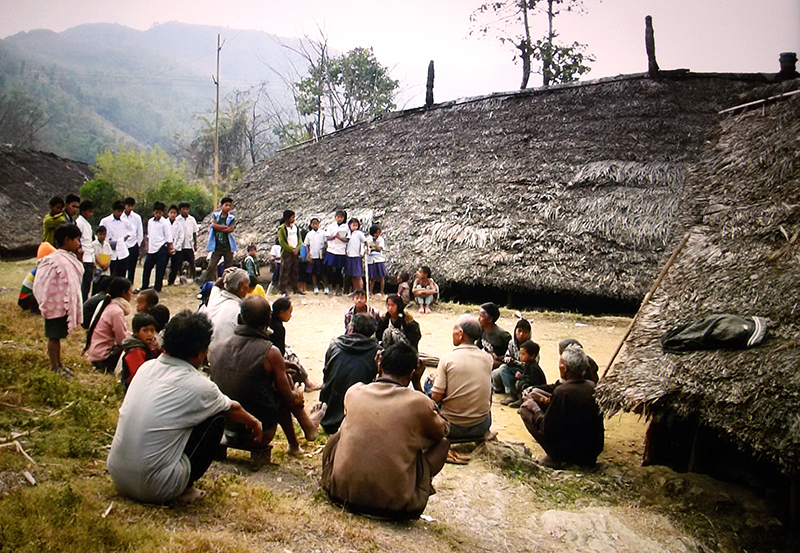Rahul R Ranadive




Grant Period: over one year and six months
Rahul Ranadive is a Mumbai-based filmmaker with over 30 years of experience as a visual media professional working across the genres of photography and filmmaking. His association with the Wancho script development project began about two years ago when he first connected with a Wancho student at the NID, Ahmedabad. Through him, he was introduced to the work of the Wancho Literary Mission. Since then Rahul has been closely involved with the Mission’s project. This grant supports him to document the work undertaken by the Wancho Literary Mission in Arunachal Pradesh towards the development and propagation of the Wancho script.
The Wancho are a tribal community inhabiting the Longding district of Arunachal Pradesh, culturally and ethnically related to the Nagas. Their language, also known as Wancho, belongs to the Tibeto-Burman language family. It does not have an indigenous script and is mostly written in Devanagari or Roman scripts, the latter language used more widely. Since the mid 1960s, several attempts at developing the Wancho script are being made. Most of the initial attempts were connected with the Baptist Church Association and were limited in approach, mostly focusing on Christian hymns and the Bible. In the mid-1980s, a script primer was developed in Shillong. But this script was largely lost later.
The more recent attempts to develop the Wancho script have been made by researcher Banwang Losu, currently the Executive Director of the Wancho Literary Mission. Inspired by a project he worked on as a student in school, Banwang has, over the last decade been deeply engaged in collecting various kinds of sounds from the Wancho community and representing them with symbols. He has discovered 42 sounds which are represented in symbols; of these 13 are vowels and 29 are consonants. He has also developed numerals from zero to nine. This development has been shared across seminars and workshops in the Longding district. After much debate and deliberations, the Wancho people have unanimously accepted the script. However, the script is a work-in-progress and is yet to enter the formal school system. Two other people, Anurag Gautam and Wangdan Wangpan have been closely working with Banwang on this project. Anurag was sponsored by the Wancho Literary Mission to make the first typeface for print usage; and Wangdan, an animation designer and a Wancho himself, created the first Wancho primer in animation.
This grant will enable Rahul to explore the process that led to the evolution of the Wancho script. Through the journeys of the three key people – Banwang, Anurag and Wangdan, the research, in aural and visual forms, will attempt to capture the challenges and triumphs in the process of developing the Wancho script. Banwang will retrace the decade long search and the discovery of the Wancho sounds and explore the logic as well as the lack of it in inventing symbols for these sounds. Rahul will also have detailed conversations with other community members. The starting point for the research will be the Longding district which has a high density of Wanchos with formal education. Subsequently, Rahul will travel to different Wancho hamlets and conduct interviews with members of the community.
In addition to the panel that evaluated this proposal, we also sought further insights from a language scholar to review the merit of the proposal. While strongly supporting the project, he suggested that Rahul attempt to capture the Wancho script’s struggle for acceptance in the current conflicted linguistic space in Arunachal. This, he said, would enable us to record a very valuable moment in history as it unfolds. This suggestion has been conveyed to Rahul and he is open to the idea.
In 2014, we supported a Thrissur-based researcher and designer K H Hussain to document and analyse the cultural, aesthetic, and technological paradigms of the Malayalam script in the era of open source movements. When Rahul’s project is completed, it would be interesting to see the connections and divergences in these two diverse contexts. Further, this project is also among the five grants that have been made in the northeast under the current round of the Arts Research programme. We hope that this project, along with the others, will make a significant contribution to the corpus of work in the northeast.
Photographs, audio and visual documentation from field trips will be Rahul’s deliverables to IFA.
